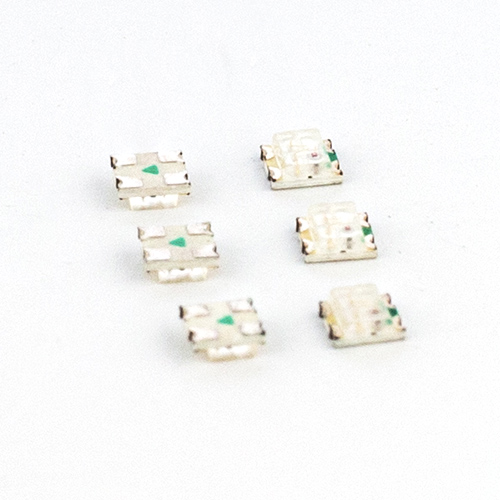LED usage has increased exponentially over the last few years with no end in sight. Market after market is experiencing an increase in the number of applications that use LED devices over other indicator and lighting options. From increased design flexibility, to their efficient use of power and environmental benefits, LED usage is growing. Below we explore the basic parameters that must be considered when implementing an LED device into your design.
Electrical Parameters of LEDs
Maximum Electrical Ratings
Power Dissipation: It is the maximum power that can be dissipated in LED before it gets permanently damaged
Continuous Forward Current: It is maximum permissible forward current through the LED. Exceeding this value will result in circuit failure.
Reverse Voltage: It is the maximum permissible voltage that can be applied to the diode in reverse polarity. An LED will not conduct with a reverse voltage applied but if that voltage is over the maximum reverse voltage capacity, LED failure will occur.
Operating Temperature: It is the range of temperature over which the LED can be safely operated. Effective heat management can be accomplished with the use of heat sinks and fans.
Reverse current: It is the maximum permissible value of reverse current.
Forward Voltage: It is the maximum allowable forward voltage across the LED for safe operation. Forward voltages are dependent on the LED material but are typically around 2-4VDC.
Nominal Optoelectrical Characteristics
Luminous Intensity: It is a measure of the light output produced (Candela –Cd orLumen-Lm) at given forward voltage and forward current. This value is critical in the design and purpose of your LED circuit. Different LED applications can require a large range of luminous intensity requirements.
View angle: It is the angle from the center of the light source to the area or device receiving the light. Maximum viewing angles allow for the greatest flexibility in design and production. When LED indication is part of the process, the viewing angle becomes a vital element of LED design.
Color – Color is actually one of the first LED characteristics that are selected. Red, Blue, Amber, White or some combination can be used to indicate a condition or communicate process factors.
Who Can Help Me Select the right LED device for my application? When you are looking for an LED supplier, choosing VCC will ensure that you have a professional and experienced team of engineers and sales people who will find the right fit for each one of your projects. VCC will work directly with your design team to ensure manufacturability of new designs, assist in LED configurations to maximize panel space and use while minimizing costs and adhering to your project specifications. Contact VCC today for all your LED design needs.







